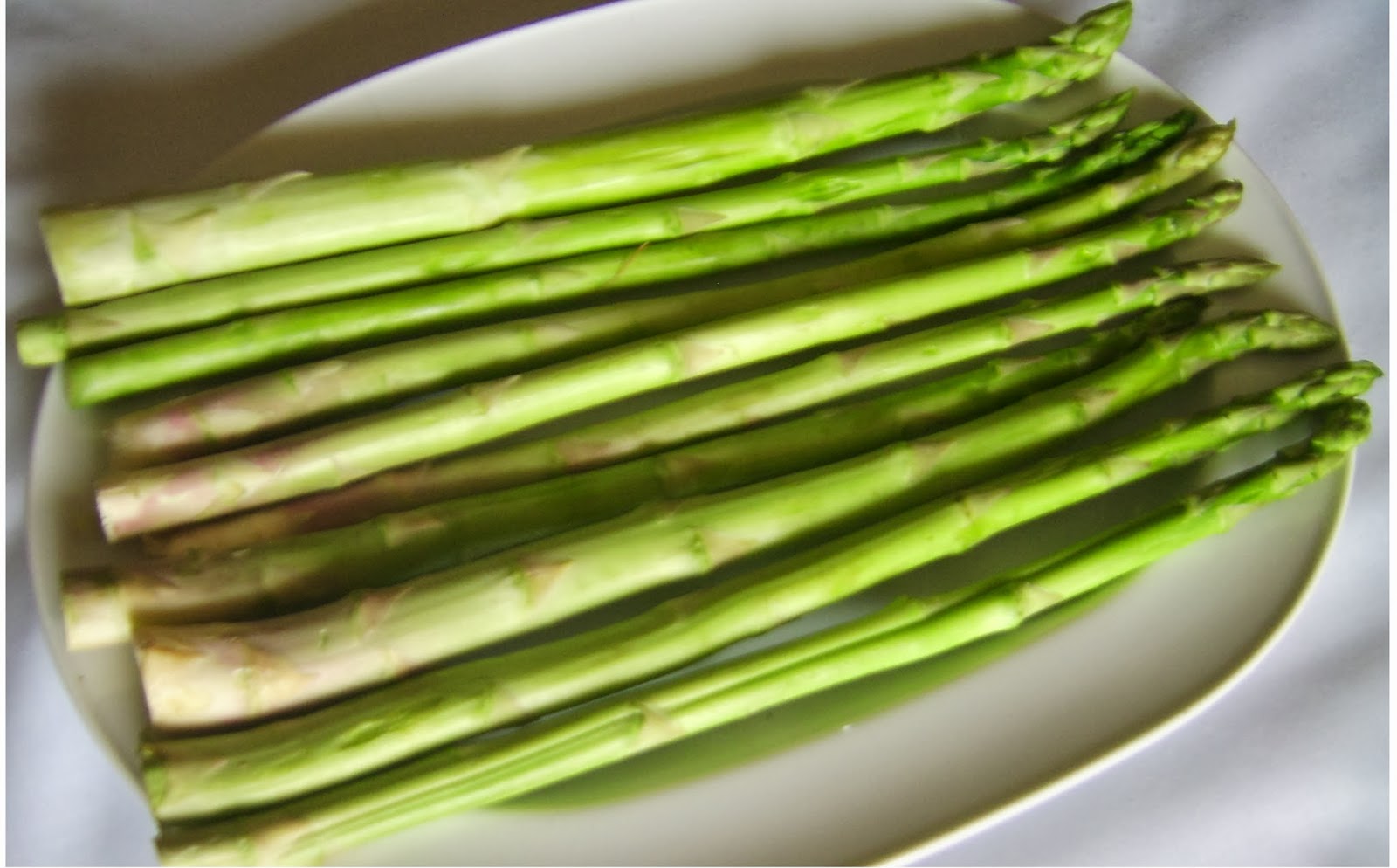From ancient times asparagus has been used as a vegetable and medicine. Only young asparagus shoots are used in cooking. Once the buds start to open the shoots becom woody and not suitable for consumption. Ninety three percent of asparagus is water. It is low in calories and sodium. In many cuisines it features as an appetizer or side dish. It is also a common ingredient in soups and stews. In Asian cooking it is stir-fried with chicken srimp or beef. In recent times it is gaining popularity as a raw vegetable in salads. It can also be pickled and stored for several years.
Four spears of asparagus, cooked, boiled, drained of about 60 grams gives only about 13 calories. It does not contain any fat or cholesterol. It is very low in sodium.
Ivy Fernandeshttps://plus.google.com/1093706883459317135690
Four spears of asparagus, cooked, boiled, drained of about 60 grams gives only about 13 calories. It does not contain any fat or cholesterol. It is very low in sodium.
It is a good source of potassium, dietary fibre (3 grams per 5.3 oz. serving), folacin, thiamin, vitamin B6, rutin and glutathione (GSH). Rutin strengthens capillary walls.
 |
| Asparagus |
A 5.3 ounce serving provides 60% of the recommended daily allowance for folacin which is necessary for blood cell formation, growth, prevention of liver disease and prevention of neural tube defects, such as spina bifida, that cause paralysis and death in babies.
For those with diabetes, Chromium in asparagus, helps in better utilisation of glucose and the fibre helps slowing the release of carbohydrates in the blood stream and prevents sharp insulin spikes.
It is a great vegetable for those who want to loose weight as it is very low in calories and rich in fibre which keeps a person full. The potassium in asparagus helps to lose belly fat.
Folic acid and vitamin B12 in asparagus prevents age-related cognitive degeneration like Alzheimer’s, Parkinson’s etc.
Asparagine in asparagus is a natural diuretic that helps the body get rid of excess fluids and salts that get accumulated.
It helps in eliminating toxins, improving immunity and contains inulin which provides nutrition for the good bacteria in the gut, thus improving digestion. It is considered as an aphrodisiac as folic acid present in asparagus helps to boost histamine production. Potassium present abundantly in asparagus is a vaso-dilator that helps the mind to remain calm and stress free. It has anti-cancer properties and has the ability to fight free radicals.
 |
| Asparagus |
The glutathione, fibre, folate and vitamin A contribute to the anti-cancer effect of asparagus by scavenging free radicals that cause oxidative damage.
It helps to control blood pressure and brings down circulating levels of homocysteine. Fibre prevents the arteries from getting clogged and thus reduces the risk of heart attack or stroke.
Folate, glutathione and vitamin present in asparagus gives it the anti-ageing properties. These nutrients also prevent the damage caused by free-radicals and preserve skin integrity even in old age.
Nutrition Profile
100g of Raw Asparagus
Nutrient Value
Water 93g
Energy 20kcal
Protein 2.2g
Fat 0.12g
Carbohydrate 4g
Dietary Fibre 2.1g
Calcium 24mg
Iron 2.1mg
Magnesium 14mg
Phosphorus 52mg
Potassium 202mg
Sodium 2mg
Zinc 0.5mcg
Folate 52mcg
Vitamin C 5.6mg
Vitamin A 38IU
Vitamin E 1.1mg
Vitamin K 41.6mcg
Source: USDA National Nutrient Database for Standard Reference, Release 24 (2011)













.JPG)












